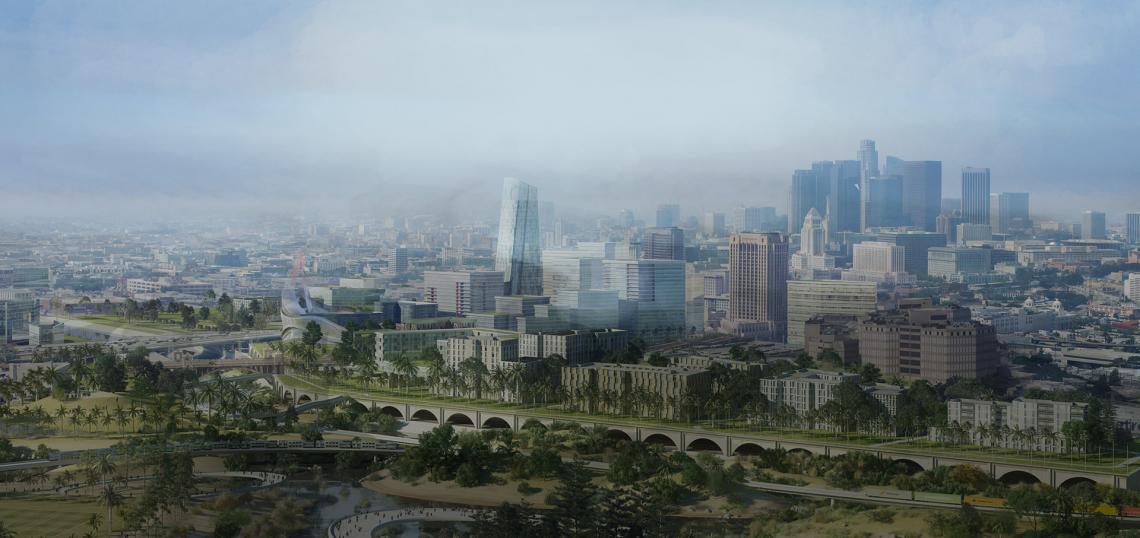After granting a sneak preview last week, AECOM has officially released its Los Angeles River Gateway proposal.
The project specifically examines a four-mile stretch between the Elysian Hills and 7th Street in the Arts District, with focus on open space, housing, employment, mobility, and sustainability. This section of the river has long been flanked by industrial uses that find themselves increasingly out of place in modern Downtown Los Angeles. AECOM's study examined methods for providing greater public access to the river, open space, new affordable housing, job opportunities and transportation options.
River Access
Access to the river through Elysian Park and Downtown is challenging due to the presence of historic rail right-of-ways along both banks. AECOM suggests multiple options for restoring access to the waterway including:
- Decking over the rail tracks
- Pedestrian bridge over rail tracks from river-facing development
- Reshaping the river's edge and placing the rail tracks on a trestle structure
- Building overhead rail tracks to allow pedestrians to pass below
- Cover tracks to create hiking and walking connections while maintaining operations
- Construct a tunnel for high-speed rail tracks to allow for public access along the surface
Open Space
AECOM imagines up to 300 acres of new park land and a 100 percent accessible riverfront by converting underutilized industrial properties into green space. This is highlighted by the coveted Piggyback Yards site in Lincoln Heights.
Housing
The proposed plan would result in an additional 36,620 housing units being built within the study area, with significant new development in Chinatown to the east of L.A. State Historic Park.
This plan would also result in at least 7,874 affordable housing units.
Jobs
Future employment under the proposed scheme would result in nearly 150,000 new jobs, adding to the area's current total of 46,730. Due to the hybrid industrial zoning under the Cornfield Arroyo Seco Specific Plan, clean tech industries would be strongly encouraged. AECOM anticipates that 97 percent of the area's jobs would be located within a 10-minute walk of a Metro rail station.
New construction is encouraged near Union Station - replacing the Piper Tech complex - and around the Cornfield park. Smaller projects are proposed for the Arts District and Boyle Heights.
Mobility
AECOM hopes to place 90 percent of future area residents within walking distance of a Metro rail station. In addition to the proposed West Santa Ana Branch light rail project, the study also imagines an infill Gold Line station adjacent to the L.A. State Historic Park.
The plan also imagines 7.7 miles of new bike lanes, new pedestrian-oriented streets and "neighborhood-scale" infrastructure by breaking up large development sites into more manageable blocks.
Moving Forward
Although the plan is still conceptual, AECOM recommends a variety of strategies to implement its vision. This includes partnerships between public agencies and the private sector, potentially organized as a joint powers authority or a non-profit public benefit corporation.
A dedicated revenue stream could be found through an enhanced infrastructure finance district, or various other state, local and federal sources. Suggested state-level sources include:
- Proposition 1 Water Project Funds
- Urban Greening Program
- Transformative Climate Communities Program
- Urban River Program
- Urban and Community Forestry Program
- Habitat Conservation Fund Program
- Flood Corridor Program
- Land Aquisition Program
- LA River Gateway (AECOM)






